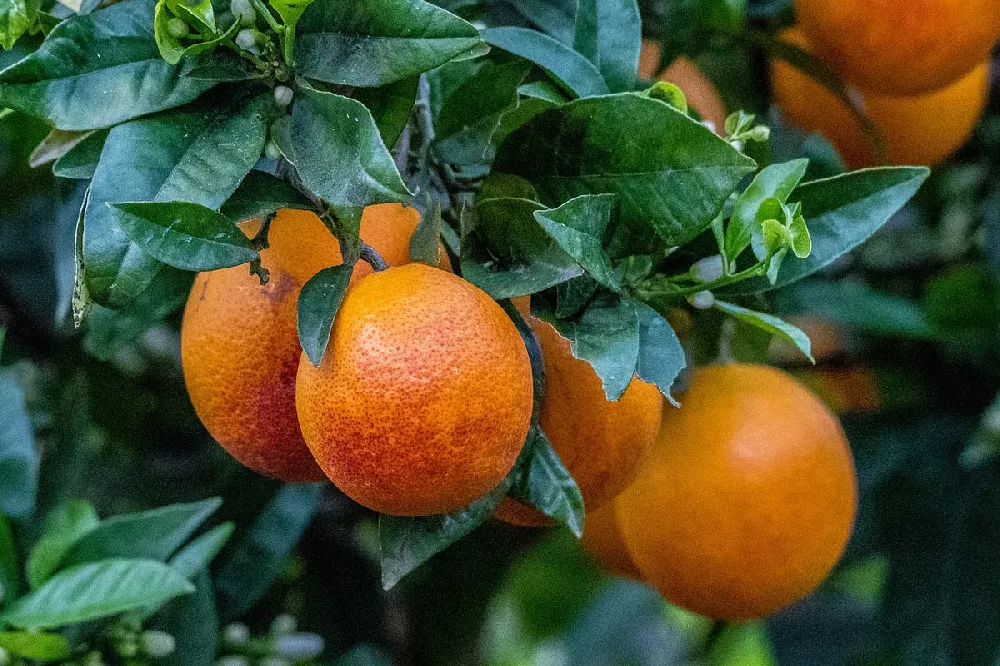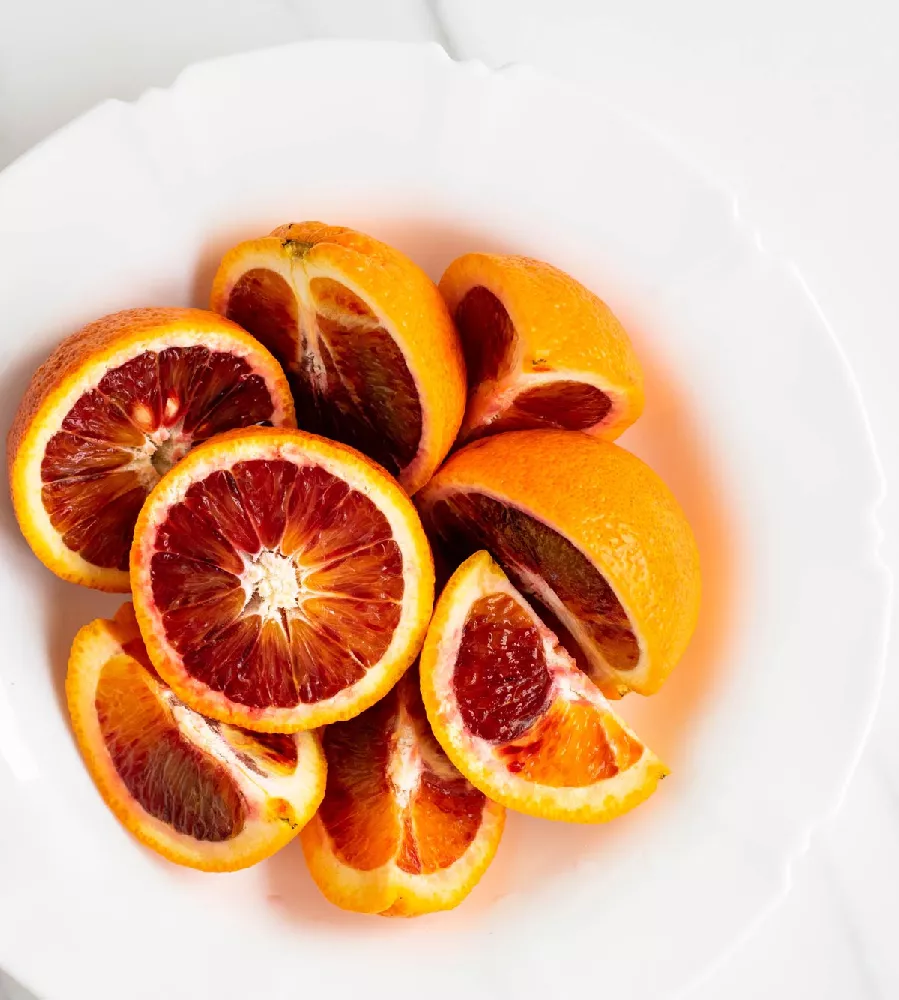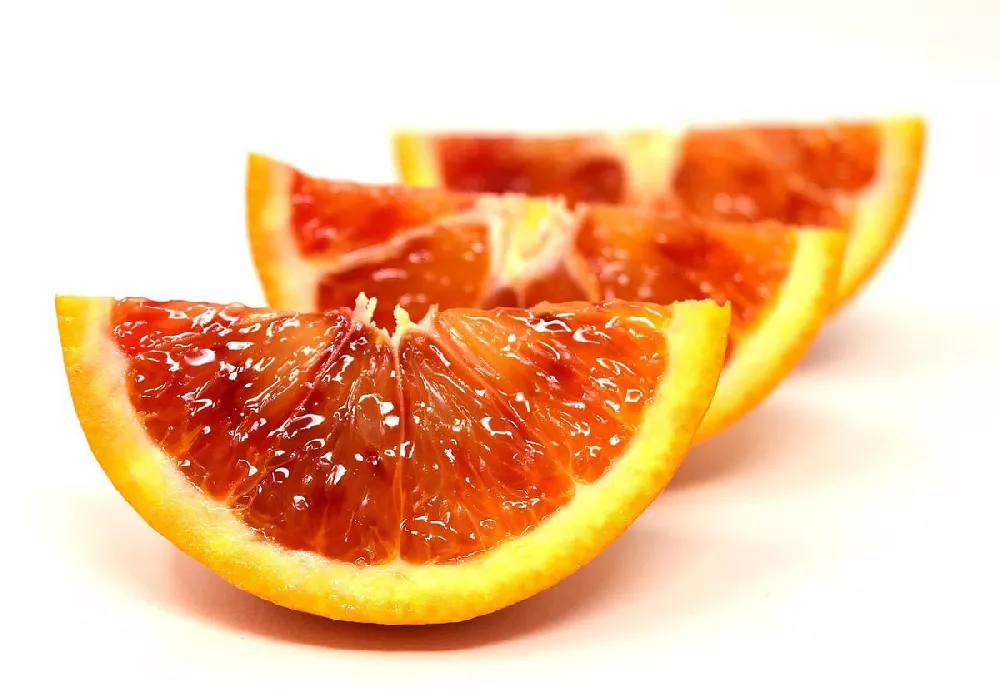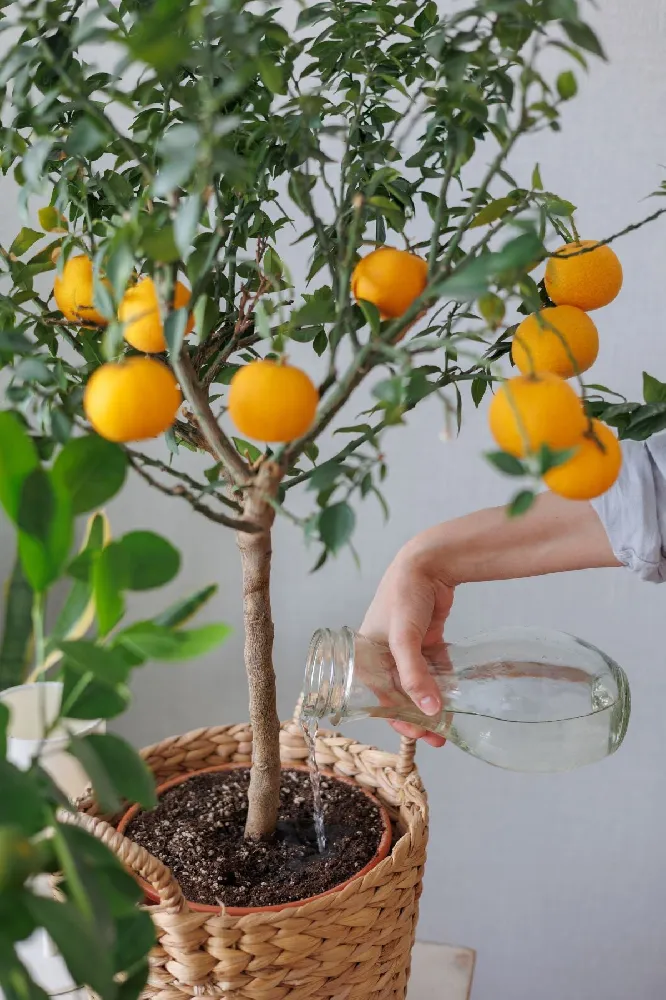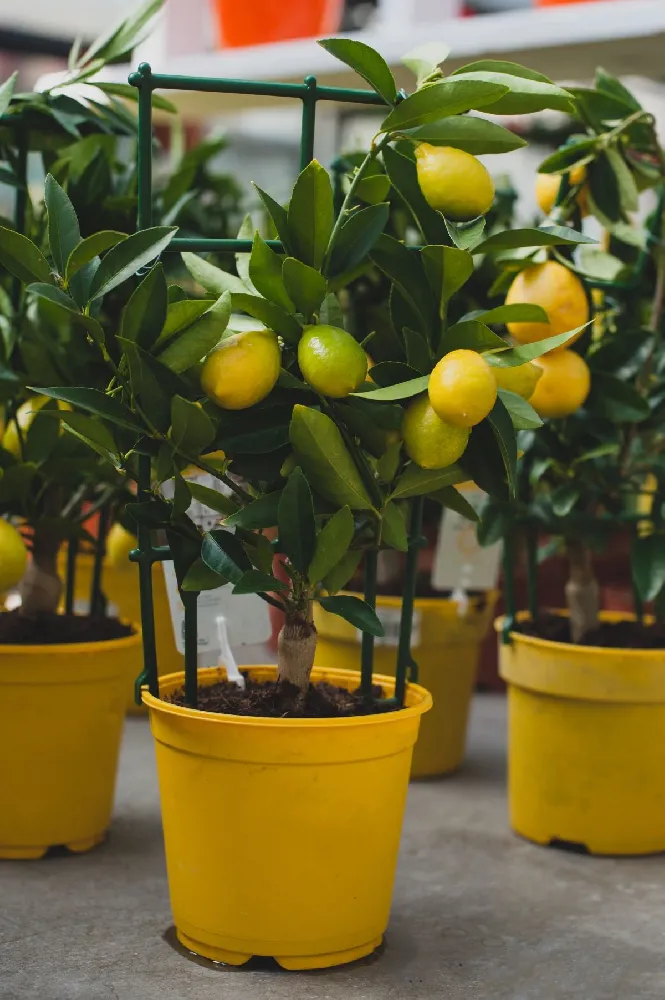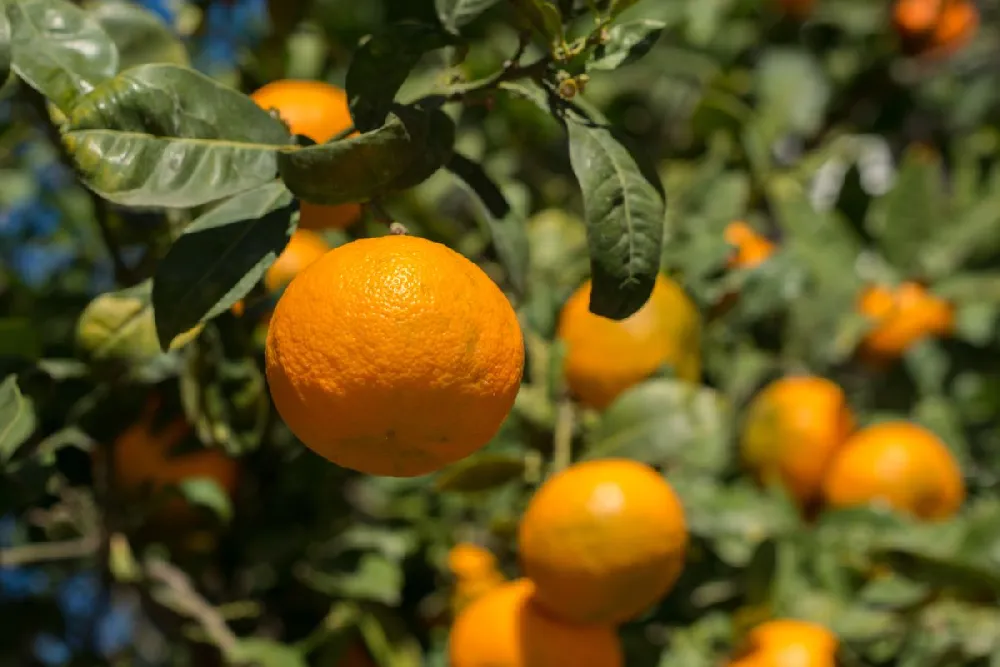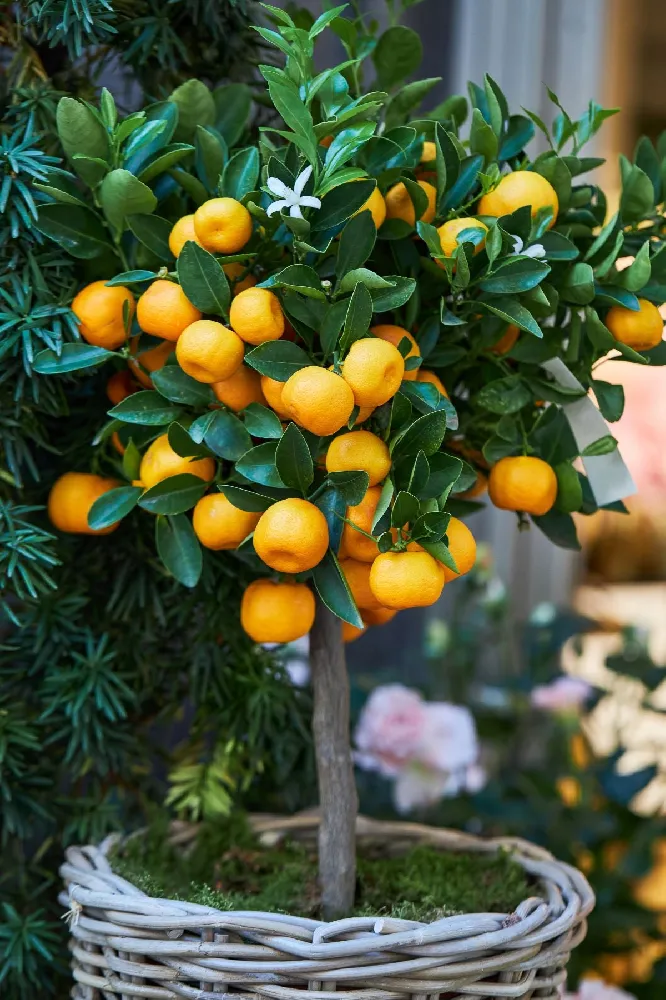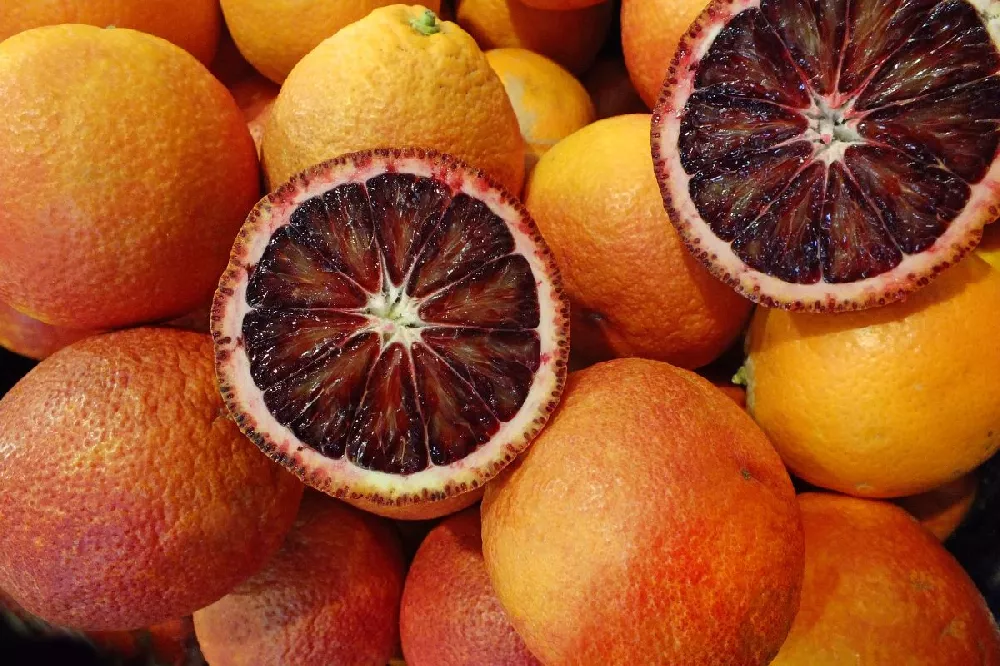- Home >
- Edible Plants >
- Moro Blood Orange
Moro Blood Orange for Sale - Buying & Growing Guide
- Ships in 1-2 days
- 1-Year Warranty Eligible
- Pots or accessories are not included unless specified in the product options.
Shipping Details:
Products shipped through FastGrowingTrees.com. Once your order is shipped, you’ll receive an email with a tracking number and estimated delivery date. Most orders will ship immediately.
Among the many types of citrus fruit that you can grow, Moro Blood Orange stands out as a unique and flavorful cultivar. Its skin is a red-orange when ripe, but that's nothing compared to the deep wine color of the flesh. The fruit is delicious, with overtones of raspberries and cherries, and it is excellent eaten raw, juiced, or used in recipes. Moro Blood Orange is an attractive tree even when not fruit-laden. Fragrant white blossoms in spring perfume the air, while its glossy dark evergreen leaves add winter interest to the garden as well. The fruit has few seeds, and is less acidic and sweeter than most orange varieties. Here are a few more reasons to love Moro Blood Orange:
- Matures at 8 feet and is easily pruned to a form that works for container growing.
- Remains cold hardy down to 10 degrees Fahrenheit.
- Allows for a harvest with only one plant, though you may get more fruit with multiples.
Plant Care
Sunlight

Moro Blood Oranges thrive in abundant sunshine, needing six or more hours of direct light a day.
Watering
Water about once a week, when the top 2 inches of soil are dry.
Fertilizing

Fertilize every six weeks during the growing season with a product formulated for citrus trees.
Planting and Care
Planting instructions
Site your Moro Blood Orange in well-draining soil that gets full sun during the day. Unpot your sapling and tease out any encircling roots, which can girdle the tree and slowly kill it. Dig a hole as deep as the root ball and twice as wide. Place the plant in the hole, spreading out the roots. Holding it upright and steady, fill in around it with topsoil, tamping down as you go to eliminate air pockets. Water thoroughly. Apply a 2-3 inch layer of an organic mulch such as bark chips to conserve moisture and hinder weed growth.
Watering and nutrients
When newly planted, water your Blood Orange every few days, but not so much that it’s sitting in a puddle. Once you see vigorous new growth, taper back watering to once or twice a week. You can check if your tree needs watering by looking at the soil 2 inches under the surface. If it’s dry, give your tree a drink. Feed during spring and summer with a citrus fertilizer as package directions indicate. Scale back on feedings during winter months.
Pollination
Moro Blood Orange is monoecious, meaning that male and female reproductive organs occur on the same plant. You can plan on a harvest even if you only have one tree. It’s worth noting, however, that having multiple trees near each other will boost the level of pollination, which occurs through the actions of bees and wasps. If your tree is indoors, you can hand-pollinate the flowers using a small toothbrush or cotton swab (like a Q-tip) to move pollen from one blossom to another.
Pruning
Moro Blood Orange doesn’t need much pruning. Monitor your tree for dead, diseased, or broken branches, and remove these when you see them. If you wish to constrain the height of a container-grown tree, you can prune lightly for shape and size after the tree fruits. Also remove any suckers that grow from the base of the tree.
Pests, diseases, and animals
Although not prone to pests or diseases, there are a few insects to watch for. These include the red spider mite, scale insects, aphids, and mealybugs. Some of these can be dealt with by releasing predatory insects such as ladybugs, which eat aphids. Diseases of the blood orange include sooty canker, a fungal disease causing the bark to peel back, and citrus stubborn disease, which causes lopsided fruit and is spread by leafhoppers.
Harvesting
Blood oranges ripen in the winter months, so plan on a harvest in January or February. The fruit is ready to pick when the stem starts to dry out and the fruit develops an orange-red blush. Taste one to see if the flavor is fully developed before picking. The fruit does not continue to ripen after picking, so plan your harvest for when you are ready to eat your oranges. They will keep in the refrigerator for four to six weeks.
Achieving maximum results
Growing your Moro Blood Orange in a decorative container is a great idea if you live in regions where the temperatures dip below 10 degrees. Use a container that is roughly twice the size of the root ball with good drainage and a high quality potting mix. Plant it as per our directions above, watering well until water starts running out of the pot’s drainage holes. Your pot-grown Blood Orange may need more frequent watering than one in the ground, and should be fed regularly. When you bring it indoors for the winter, occasionally wipe down the leaves with a damp cloth to eliminate dust and insects, and mist the leaves regularly.
FAQs
How big will my Moro Blood Orange get?
Is the Moro Blood Orange Toxic?
The fruit is totally non-toxic and can be eaten without concern. However, the plant is toxic for dogs, cats, and horses. Although they are unlikely to eat the leaves, if your companion animal likes to nibble on foliage, your best bet is to keep your Moro Blood Orange where they cannot access it.
How is the Moro Blood Orange best used in my landscape?
As a smaller ornamental tree, the Moro Blood Orange can play a primary role in a planned garden. It makes an excellent centerpiece in any Mediterranean-themed garden, for example, and would be appealing in Asian-focused environments as well. Consider placing two in decorative terra cotta planters to flank your front doorway or the entryway to your patio or back garden. In an edible garden, surround a small grove of them with vegetables that feature extravagant foliage, such as kale or Swiss chard.
Compare Similar Products
Customer Reviews
 Good to go!
Good to go!No problems encountered.
 Blood Orange Tree
Blood Orange TreeTree was in fantastic shape when it arrived!!!!!
 Great
GreatExceptional!!!!!1
 Blood orange
Blood orangeGreat. Excellent condition
You can't add more Product Name - Product size to the cart.
OK